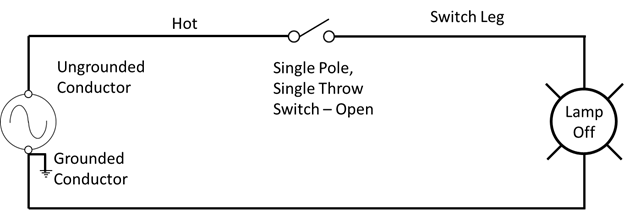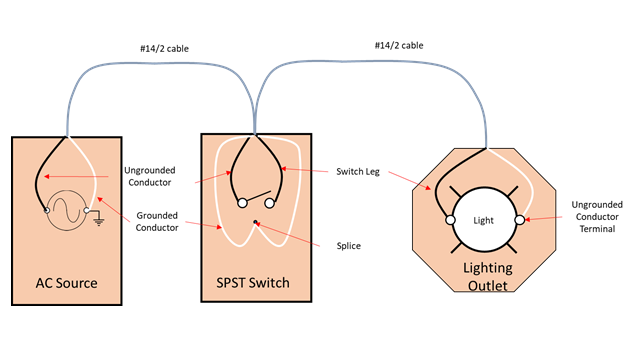46 Single-pole switching
Aaron Lee
The most basic form of lighting control is the SPST (single-pole, single-throw) switch. Since an electrical load requires two conductors to operate, we can connect a switch in series with a single wire and use it to turn the load on or off.

Lighting loads are commonly energized at 120V, and so utilize a single ungrounded conductor, and a grounded conductor as the return path for the current.
It is important that we connect our switch in series with the ungrounded conductor so that if the switch is off, and a person were to service a lamp, everything is at ground potential. If the switch were installed in the grounded conductor, then it would still control the lamp, but in the off position, the lamp’s components would still be energized to 120 volts, introducing a hazard to anyone servicing the lamp.

